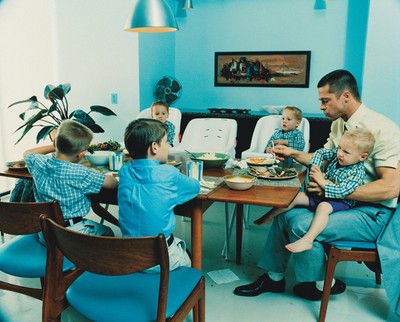Brad

Generally birth rates are declining in Europe, with the Nordic countries presently having the highest ones, save for France. Eastern European countries come at the bottom (together with Italy) and have birth rates that are considerably lower than in the Nordic countries and have been low now for over a decade by now. The balance between the birth rate and the death rate is determing in terms of the natural population growth of a country (immigration plays a part as well in the growth while emigration may under normal circumstance be negligible) While the overall population of the world is increasing, the UN states that Eastern European countries (for instance: Bulgaria, Latvia, Russia, and Ukraine) are likely to lose between one third to half of their population by the middle of this century.
When examining the decreasing of birth rates in some parts of the world it's interesting to have a look at what de facto need there is of children today. Way back when for example in a rural society families had to produce everything they needed in their living themselves. Women took care of the household, raising the children and taking care of the production of food and men went out to work to earn money and took care of the heavier chores. In a society where most of what you consumed had to be produced by yourself, the family had a greater significance than today. The more children the family had the more people there were helping out with the chores. A perceived importance of passing on the family genes through male figures of the family may also explain a higher birth rate than what is the case today in many parts of the world. Families might have given birth to numerous children in order to have a couple of sons. Sons were looked upon as needed to take care of parents when they grew older as daughters left home after marriage.
In another time, giving birth to biological children might have been unquestioned and seen as a natural and very integrated part of life, due for everyone. The concept of the family is more vague today and doesn't necessarily include man, wife and children as it has tradition-wise. There are alternative forms of living that don't necessarily fit with bringing up children. Also a pro-choice attitude is generally more common today. Abortions have become more available in places where it previously was not as accepted as for example in Eastern Europe.
Importantly there is also a significant link between aiding women in combining work life and family life and the birth rate. The aid in question include factors like equality between men and women in raising the children i.e. father's participation, possibilities for parental leave post-birth and and especially paternal leave, social welfare and the existence of state subsidized day care. If men are taking leave after the birth of a child, the women can return to work for part of that time. With state subsidized day care women can go back to working full time within reasonable amount of time and families can go on having two full incomes, why having children doesn't have to be an economic blow. It's said that only countries where women are provided good possibilites of combining work and family life, will see sustainable birth rates.
A large decline in birth rates in Eastern Europe could at least partly be explained by a relatively sudden change of more women so to speak leaving their homes to enter the labour force without having the same aid of Nordic women. Women in Eastern European countries are also becoming more educated on higher levels and as a rule the better educated women are the fewer children they bear. Higher level studies for these women also mean they will have children later in life which has impact on the number of children they will give birth to. On the one hand Nordic women are obviously
well-educated too but on the other hand they've generally also so far had better possibilities of both being working women as well as mothers.

Photo: Steven Klein shooting Jolie and Pitt. The pair adopted 3 children and gave birth to 3 biological ones (not pictured here)
